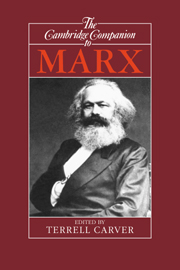10 - Aesthetics
Liberating the senses
Published online by Cambridge University Press: 28 May 2006
Summary
At the very center of Marxism is an extraordinary emphasis on human creativity and self-creation. Extraordinary because most of the systems with which it contends stress the derivation of most human activity from an external cause: from God, from an abstracted Nature or human nature, from permanent instinctual systems, or from an animal inheritance. The notion of self-creation, extended to civil society and to language by pre-Marxist thinkers, was radically extended by Marxism to the basic work processes and thence to a deeply (creatively) altered physical world and a selfcreated humanity.
Raymond WilliamsThere are several good reasons to pause before wading into Karl Marx's philosophy of art, but surely the most worrisome is that there is nothing there to wade into, at least not in the deep and systematic sense that the word philosophy usually and properly entails. Marx was a remarkably well educated and broadly read man, and one can find in his works an impressive range of scattered references to a variety of aesthetic phenomena, from specific works of art to the most general aspects of artistic production. But there is nothing even approaching a systematic aesthetic theory in all of this. Judging strictly from the written record, it appears that Marx was after bigger, or at least very different, fish.
Such a conclusion has political as well as textual punch. Marx was, after all, a revolutionary: “The philosophers have only interpreted the world in various ways.” As the last and most famous of the Theses on Feuerbach has it, “the point is to change it” (Marx, 1975: 423; italics in original).
- Type
- Chapter
- Information
- The Cambridge Companion to Marx , pp. 246 - 274Publisher: Cambridge University PressPrint publication year: 1991
- 6
- Cited by

